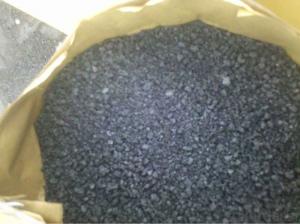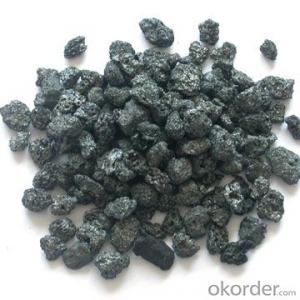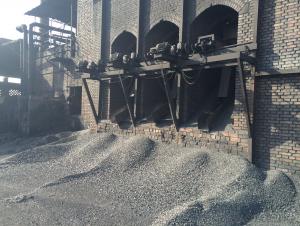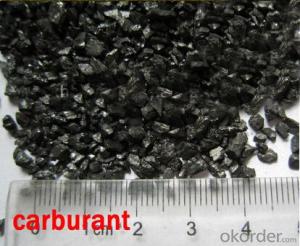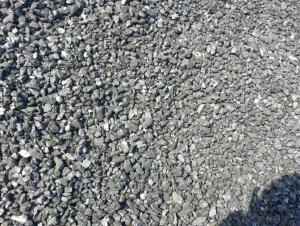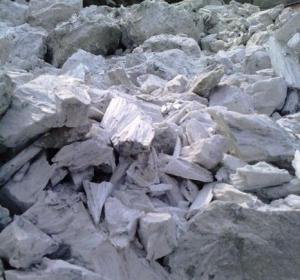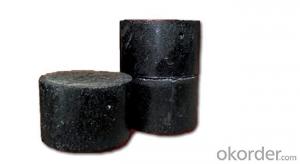FC93Gas Calcined Anthracite/CNBM China GCA
- Loading Port:
- Tianjin
- Payment Terms:
- TT OR LC
- Min Order Qty:
- 0 m.t.
- Supply Capability:
- 100000 m.t./month
OKorder Service Pledge
OKorder Financial Service
You Might Also Like
Packaging & Delivery
| Packaging Detail: | 25kgs/50kgs/1ton per bag or as buyer's request |
| Delivery Detail: | Within 20 days after receiving corect L/C |
Feature
All of our goods are made in the best quality of world famous Tianjin. All of our products are with High carbon, Low ash, low sulphur, Low Moisture.
Usage
The Calcined Anthracite Coal/Gas Calcined Anthracite Coal/Carbon Raiser is mainly used in steelmaking in electrical stove, screening water, shipbuilding sandblast to remove rust. It can reduce the cost of steelmaking effectively by replacing the traditional petroleum coke of carburant.Also can improve the Carbon content in steel-melting and Ductile iron foundry.
Specifications
Calcined Anthracite
Fixed carbon: 90%-95%
S: 0.5% max
Size: 0-3. 3-5.3-15 or as request
PARAMETER UNIT GUARANTEE VALUE | |||||
F.C.% | 95MIN | 94MIN | 93MIN | 92MIN | 90MIN |
ASH % | 4MAX | 5MAX | 6MAX | 7MAX | 8MAX |
V.M.% | 1 MAX | 1MAX | 1.5MAX | 1.5MAX | 1.5MAX |
SULFUR % | 0.5MAX | 0.5MAX | 0.5MAX | 0.5MAX | 0.5MAX |
MOISTURE % | 0.5MAX | 0.5MAX | 0.5MAX | 0.5MAX | 0.5MAX |
Size can be adjusted based on buyer's request.
Picture

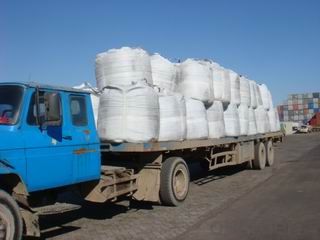
- Q:What does carbon cloth tonnage mean?
- Carbon cloth tonnage is illegal: mean a square centimeter of sectional area of carbon cloth tension of tonnage. Meaning that the carbon cloth rolled into a solid "rod" if the cross-sectional area of the bar is 1 cm, the maximum tension tonnage it bear -- carbon cloth tonnage.
- Q:How is carbon used in the production of solar cells?
- Carbon is not typically used in the production of solar cells as a primary material. However, carbon-based materials such as carbon nanotubes or graphene may be used as conductive additives or in electrode materials to enhance the efficiency and performance of solar cells.
- Q:How does carbon affect the formation of air pollution in urban areas?
- Air pollution in urban areas is significantly influenced by carbon, which exists in the form of carbon dioxide (CO2) and carbon monoxide (CO). Urban areas are characterized by high population density and intense human activities, resulting in increased emissions of carbon-based pollutants. The burning of fossil fuels like coal, oil, and natural gas releases carbon dioxide into the atmosphere, contributing to global warming and climate change. In urban areas, the combustion of fossil fuels for energy production, transportation, and heating purposes emits substantial amounts of carbon dioxide. The accumulation of CO2 in the atmosphere traps heat, causing the urban heat island effect and exacerbating air pollution issues. Another carbon-based pollutant, carbon monoxide, primarily originates from vehicle exhausts and industrial processes. In urban areas with heavy traffic congestion, carbon monoxide levels tend to be high. This gas is particularly harmful as it impairs the blood's oxygen-carrying ability, resulting in various health problems, especially for individuals with pre-existing respiratory conditions. Moreover, the presence of carbon in urban areas promotes the formation of secondary air pollutants like ozone and particulate matter. Carbon reacts with other pollutants, such as nitrogen oxides (NOx) and volatile organic compounds (VOCs), under sunlight, leading to the creation of ground-level ozone. Ozone is a harmful gas that causes respiratory issues and harms vegetation. Additionally, carbon-based pollutants contribute to the generation of fine particulate matter (PM2.5) in urban areas. These particles are small enough to be inhaled deep into the lungs, causing respiratory and cardiovascular problems. Particulate matter also reduces visibility, leads to smog formation, and deposits harmful substances on surfaces. To combat air pollution in urban areas, it is crucial to reduce carbon emissions. This can be achieved through various strategies, including promoting clean energy sources, implementing stricter emission standards for vehicles and industries, and encouraging sustainable transportation options like public transit and cycling. By addressing carbon emissions, we can effectively reduce air pollution and enhance the overall air quality in urban areas, resulting in healthier and more sustainable cities.
- Q:What are the consequences of increased carbon emissions on educational systems?
- Increased carbon emissions can have several consequences on educational systems. Firstly, the health impacts of pollution caused by carbon emissions can lead to increased absenteeism among students and teachers, affecting the overall learning environment. Additionally, extreme weather events linked to climate change, such as hurricanes or heatwaves, can disrupt educational infrastructure, leading to school closures and disruptions in academic schedules. Moreover, the need to address climate change and its impacts may require educational institutions to allocate resources and curriculum time to climate-related topics, potentially diverting attention and resources from other subjects. Finally, the long-term consequences of climate change, such as rising sea levels or increased natural disasters, may force the relocation or rebuilding of educational facilities, causing significant disruptions to students' education.
- Q:How is carbon used in the manufacturing of electronics?
- The manufacturing of electronics relies on carbon in various ways. One of its primary uses is in the production of carbon nanotubes, which are essential in electronics. These nanotubes possess exceptional electrical conductivity and mechanical strength, making them ideal for various electronic devices. For example, they can be utilized to create high-performance transistors that are crucial components in computer chips. Furthermore, carbon is utilized in the manufacturing of batteries for electronic devices. Graphite, a carbon-based material, is commonly used as the anode material in lithium-ion batteries. This is due to its efficient storage and release of lithium ions, enabling the rechargeable nature of these batteries. Moreover, carbon is employed in the production of conductive coatings and inks used in printed circuit boards (PCBs). Carbon-based materials, such as carbon black or carbon nanotubes, are added to enhance the electrical conductivity of these coatings and inks. Consequently, the flow of electrical signals throughout the circuitry of electronic devices is ensured. In conclusion, carbon plays a crucial role in the manufacturing of electronics. It is utilized in the production of carbon nanotubes for high-performance transistors, serves as anode material in lithium-ion batteries, and enhances the electrical conductivity of conductive coatings and inks for printed circuit boards. These applications emphasize the versatility and significance of carbon in the electronics industry.
- Q:How is carbon used in the production of paints?
- Carbon is used in the production of paints in several ways. One of the main uses of carbon in paint production is as a pigment. Carbon black, which is a form of elemental carbon, is commonly used as a black pigment in various types of paints. It provides a deep and intense black color, as well as excellent light absorption properties, making it ideal for creating dark shades in paints. Carbon also plays a role in the formulation of certain types of paints, such as carbon-based coatings. These coatings are used in applications where resistance to heat, chemicals, and corrosion is required. Carbon-based coatings are often used in industries like automotive, aerospace, and marine, where durability and protection are crucial. These coatings can be applied to various surfaces, providing a high level of protection and extending the lifespan of the painted object. In addition, carbon is used as a filler material in some types of paints. Carbon fillers are added to improve the mechanical properties of the paint, such as its strength, hardness, and resistance to wear and tear. Carbon fillers also enhance the overall performance of the paint, making it more durable and long-lasting. Overall, carbon is an essential ingredient in the production of paints, serving as a pigment, a component of coatings, and a filler material. Its versatile properties make it a valuable addition to various paint formulations, enhancing the aesthetic appeal, durability, and performance of the final product.
- Q:How does carbon impact the availability of clean drinking water?
- Carbon can have a significant impact on the availability of clean drinking water through various processes. One of the major ways carbon affects water quality is through the process of carbon dioxide (CO2) emissions and subsequent acid rain formation. When CO2 combines with water in the atmosphere, it forms carbonic acid, which can be very damaging to water bodies. Acid rain, which is primarily caused by the release of carbon emissions from industrial activities and burning fossil fuels, can have devastating effects on freshwater sources. It can lower the pH level of lakes, rivers, and groundwater, making the water more acidic. This increased acidity can harm aquatic life, destroy ecosystems, and render water sources unsuitable for drinking, agriculture, or industrial use. Additionally, carbon can impact the availability of clean drinking water through its role in climate change. Excessive carbon emissions contribute to the greenhouse effect, leading to rising global temperatures and altering weather patterns. These changes can result in prolonged droughts and intense rainfall events, both of which can negatively affect water availability and quality. Droughts caused by climate change can lead to water scarcity, as precipitation patterns become less predictable and water sources dry up. This can lead to conflicts over limited water resources and force communities to rely on contaminated or unsafe water sources. On the other hand, intense rainfall events caused by climate change can result in flooding, which can overwhelm sewage systems and contaminate drinking water with pollutants and pathogens. Moreover, carbon emissions are associated with the degradation of natural ecosystems, including forests and wetlands, which play a crucial role in water purification. Forests act as natural filters, absorbing carbon dioxide and releasing oxygen, while wetlands naturally filter and cleanse water. When these ecosystems are destroyed or degraded due to deforestation or drainage, the availability of clean drinking water is further compromised. In conclusion, carbon emissions have a significant impact on the availability of clean drinking water. Acid rain formation due to carbon dioxide emissions and climate change-induced droughts and floods can all contribute to water scarcity and contamination. Protecting and reducing carbon emissions is vital to ensuring the availability of clean drinking water for present and future generations.
- Q:What is the role of carbon in the formation of diamonds?
- The creation of diamonds heavily relies on carbon, as it is the sole element accountable for their existence. Diamonds are generated in the deep recesses of the Earth's mantle, amidst extreme temperature and pressure. When carbon atoms face immense heat and pressure, they undergo a process called graphitization, which entails rearranging their atomic composition and transitioning into a crystal lattice structure, ultimately leading to the formation of diamonds. The process commences with carbon-rich materials, such as organic matter or carbon-bearing minerals, encountering the intense heat and pressure prevalent in the Earth's mantle, generally at depths ranging from 150 to 200 kilometers. In such circumstances, the carbon atoms within these materials are compelled to bond in a distinctive manner, producing the rigid, three-dimensional lattice structure that characterizes diamonds. The formation of diamonds necessitates specific geological conditions, namely temperatures surpassing 900 degrees Celsius and pressures surpassing 725,000 pounds per square inch (50,000 atmospheres). These extreme conditions are typically present in regions where ancient tectonic plates collide or during volcanic eruptions that bring diamonds to the Earth's surface. The ability of carbon to form robust covalent bonds with other carbon atoms is what facilitates the transformation into diamonds. Each carbon atom establishes four sturdy covalent bonds, giving rise to a tetrahedral structure. This formidable bonding empowers diamonds with exceptional hardness, rendering them one of the toughest substances known to humanity. To sum up, carbon plays a vital part in the formation of diamonds, undergoing graphitization amid immense temperature and pressure to create the distinct crystal lattice structure that grants diamonds their extraordinary properties. Without carbon, the creation of diamonds as we presently comprehend them would be unattainable.
- Q:What is the structure of carbon-based polymers?
- Carbon-based polymers have a repeating chain-like structure, where carbon atoms are bonded together to form the backbone of the polymer. These carbon atoms are typically covalently bonded to other atoms or groups of atoms, such as hydrogen, oxygen, nitrogen, or halogens. The arrangement of these atoms and their connectivity determines the properties of the polymer. In addition to the carbon backbone, carbon-based polymers often contain functional groups, which are specific combinations of atoms that can impart unique chemical properties to the polymer. These functional groups can be attached to the carbon backbone at various points along the chain, introducing chemical diversity and modifying the polymer's behavior. The repeating units in carbon-based polymers, known as monomers, can vary in size and complexity. For example, simple hydrocarbons like ethylene can polymerize to form polyethylene, which consists of a long chain of carbon atoms with hydrogen atoms attached. On the other hand, more complex monomers, such as acrylonitrile or styrene, can be used to create polymers like polyacrylonitrile or polystyrene, respectively. These polymers incorporate additional atoms or functional groups, leading to different properties and applications. Overall, the structure of carbon-based polymers is highly diverse and can be tailored to meet specific requirements, making them versatile materials used in a wide range of industries, including plastics, textiles, and electronics.
- Q:How do fossil fuels release carbon into the atmosphere?
- Fossil fuels release carbon into the atmosphere through a process called combustion. When fossil fuels such as coal, oil, and natural gas are burned for energy, the carbon that was trapped underground for millions of years is released as carbon dioxide (CO2) gas. During combustion, the carbon and hydrogen atoms in fossil fuels react with oxygen in the air to produce CO2, water vapor (H2O), and heat. The released CO2 is then emitted into the atmosphere as a greenhouse gas. The burning of fossil fuels in various sectors such as transportation, electricity generation, and industrial processes is a significant contributor to the increase in atmospheric CO2 levels. The continuous extraction and burning of these fuels at a rapid rate have resulted in a substantial increase in the concentration of CO2 in the Earth's atmosphere over the past century. This increase in atmospheric CO2 is a major cause of climate change because CO2 acts as a heat-trapping gas, which leads to the greenhouse effect. The greenhouse effect is the process by which the Earth's atmosphere retains the heat radiated from the surface, causing a rise in global temperatures. The release of carbon from fossil fuels into the atmosphere is therefore a major concern due to its role in climate change and the subsequent environmental and societal impacts. To mitigate these effects, there is a growing global effort to shift towards renewable and cleaner sources of energy, reduce fossil fuel consumption, and implement sustainable practices.
1. Manufacturer Overview |
|
|---|---|
| Location | |
| Year Established | |
| Annual Output Value | |
| Main Markets | |
| Company Certifications | |
2. Manufacturer Certificates |
|
|---|---|
| a) Certification Name | |
| Range | |
| Reference | |
| Validity Period | |
3. Manufacturer Capability |
|
|---|---|
| a)Trade Capacity | |
| Nearest Port | |
| Export Percentage | |
| No.of Employees in Trade Department | |
| Language Spoken: | |
| b)Factory Information | |
| Factory Size: | |
| No. of Production Lines | |
| Contract Manufacturing | |
| Product Price Range | |
Send your message to us
FC93Gas Calcined Anthracite/CNBM China GCA
- Loading Port:
- Tianjin
- Payment Terms:
- TT OR LC
- Min Order Qty:
- 0 m.t.
- Supply Capability:
- 100000 m.t./month
OKorder Service Pledge
OKorder Financial Service
Similar products
New products
Hot products
Hot Searches
